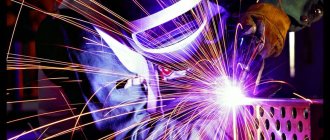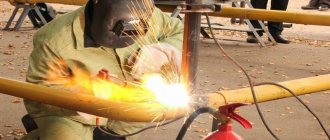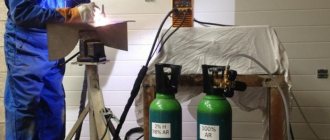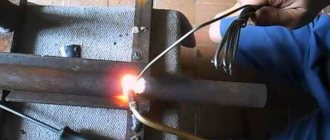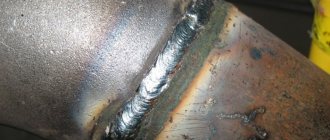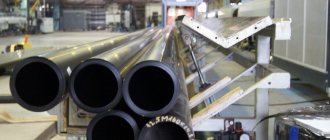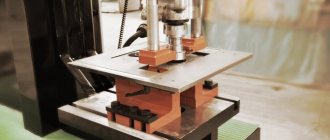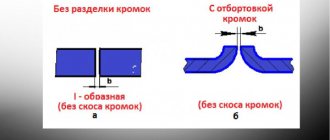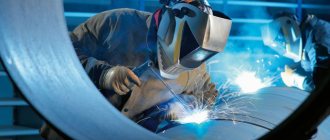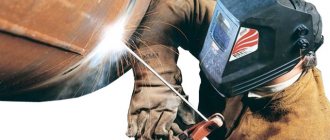This method of joining metal parts, such as gas welding, has been around for over a hundred years. During this time, this technology continues to be successfully improved, although other welding methods that use an electric arc are developing more actively and are replacing welding, which uses a gas torch.
Burner flame
What is gas welding
The essence of gas welding is that the metal of the workpieces and filler material being joined is melted by the heat generated by the combustion of flammable gases. To obtain a high temperature, they are mixed with pure oxygen in a gas burner mixer. The ratio of components can be quickly changed by adjusting the volumes supplied to the mixer. This allows you to set the optimal welding or cutting mode.
Gas welding diagram
In gas welding, compared to arc welding, the heating rate of the working area is lower. This feature is considered an advantage when working with tool steel, cast iron, and non-ferrous metals. Welding of these metals should be carried out with slow heating and cooling. These also include some grades of alloy steel.
A distinctive feature of gas welding is the ability to weld almost all metals.
Classification by characteristics
The distinctive features of the equipment are the type of power supply and design. Additional features include:
- type of feeding mechanism;
- cooling method;
- operating voltage;
- availability of additional functions.
We recommend reading: How to choose gas for welding
The devices differ in the type of protective environment. The devices are also classified according to the type of protective environment: those operating with active gases, those combined with inert substances, and universal. According to their design, the devices are divided into:
- Single-body, where the power source, feed mechanism, and gas valve are located in one block. Single-body semi-automatic machines are equipped with holders for internal or external installation of the reel.
- Double-hulled, where each component is placed in a separate module to which a cable-hose is connected.
Advantages and disadvantages
The advantages of gas welding include:
- low price of equipment;
- possibility of welding and cutting in field conditions;
- regulation of flame power over a wide range;
- welding of most types of metal and alloys - from aluminum to alloy steels;
- smooth heating, preventing the deformation of parts and the formation of cracks.
Flaws:
- Low efficiency due to high heat dissipation. For the same reason, the technology is not cost-effective when welding workpieces thicker than 5 mm due to excessive gas consumption.
- Heating a large area of areas adjacent to the seam contributes to the formation of residual stresses in the metal.
- When joining with an overlap, there is a high probability of deformation of the parts.
- Due to the peculiarities of the operating principle, the gas welding process is difficult to mechanize.
- The use of flammable gases is associated with a high explosion and fire hazard.
Setting up a semi-automatic welding machine
For the example, not only the model of the device is required, but also certain conditions. The material will be steel plates 2.5 mm thick, to which wire with a diameter of 1 mm and gas - a mixture of argon (80%) and carbon dioxide (20%) will be ideally suited.
On the gearbox we set the gas flow rate to 10-12 l/min - this will be enough to work with a given metal thickness. The consumption of shielding gas greatly affects the quality of the seam. If the shielding gas flow is insufficient, pores may form in the seam. If there is too much gas, turbulence occurs, which also interferes with normal protection.
We configure the parameters of our device. For a device with synergy it is very simple:
- Select the welding type on the panel – MIG SYN
- Choose a gas - a mixture of argon and carbon dioxide
- Select the diameter of the welding wire – 0.8 mm
- We select the 2-stroke burner operating mode, because We don’t plan long, continuous welding.
HELPFUL ADVICE.
If there are long seams to be made, then it is better to choose a 4-stroke method - then by pressing the start button on the torch once when starting work, you can then release the button so that your hand does not get tired. If short seams are to be made, then it is better to regulate the start and stop button, selecting the 2-stroke mode.
5. Set the welding current. For our case, this is about 100 Amperes.
HELPFUL ADVICE.
In semi-automatic welding, there is a direct relationship between the current strength and the wire feed speed - the higher the current, the higher the wire feed speed and vice versa - the slower the wire feed, the lower the current strength.
Our semi-automatic welding machine with synergetic control automatically sets the arc voltage. At the same time, if necessary, the welder can adjust the voltage to suit his working style and feeling of the process.
This device has inductance adjustment. This setting allows you to adjust the rigidity of the arc - adjust the shape of the bead and the depth of penetration, achieving a uniform, aesthetically beautiful seam. This function will make life easier for a novice welder and will allow him to achieve an even, high-quality seam in the shortest possible time.
In the presented example, we prepared the apparatus for working on our workpiece. Use a cheat sheet that will help you quickly configure the necessary parameters in the future. Save it to bookmarks, it will be useful to you:
| Metal thickness | Current strength | The diameter of the wire |
| 1.5 mm | 70 - 80 A | 0,8 |
| 2.0 mm | 90-110 A | 0,8 |
| 3 mm | 120 - 140 A | 1,0 |
| 4 mm | 140-160 A | 1,0 |
| 5mm | 160 - 200 A | 1,2 |
Application area
Gas welding of metals is used to perform:
- assembly and repair of steel products up to 5 mm thick;
- installation of small diameter pipelines;
- surfacing of hard alloys and non-ferrous metals on steel and cast iron;
- installation of structures made of thin-walled pipes;
- sealing defects on cast workpieces.
Gas-flame welding has become widespread in construction, agriculture, and repair shops.
Let's sum it up
Electric welding is a useful skill in everyday life and construction. It is possible to master it on your own. Such training will be based on:
- understanding the theory of the welding process, necessary for correctly setting up the welding machine and carrying out metal welding work;
- compliance with safety rules when welding, which boils down to the use of a protective suit, goggles or mask, and welding away from flammable objects;
- practical experience, which begins with the ability to strike an arc and weld beads.
Do not despair if your first experiments with electric welding do not please you with beautiful seams. Believe me, every experienced welder has similar welding skeletons. The ability to create not only high-quality, but also visually attractive seams will come with experience and frequent welding practice.
Equipment used
The set of equipment for gas welding includes:
- Water seal to prevent damage to equipment components from backfire. Installed between the burner and the acetylene source. As evaporation occurs, water is added.
- Oxygen and flammable gas cylinders or acetylene generator. According to safety regulations, the gas should not come into contact with the paint. Therefore, the top of the cylinders is not painted. To prevent an explosion when acetylene comes into contact with copper, valves made of a different metal must be installed on cylinders with this gas.
- Gas burner, regular or injection.
- Reducers to reduce the pressure of gas and oxygen at the outlet of the cylinders.
- Hoses for connecting the gas burner to cylinders. Hoses for flammable gases have a yellow stripe.
Gas welding equipment
If gas welding work is carried out in different places, the equipment is installed on a trolley with appropriate fastenings. Enterprises install stationary gas stations with ventilation and cabinets for storing cylinders.
Step-by-step instructions for implementation
Semi-automatic welding scheme
Getting started, it is recommended, as always, to start with organizing the workplace:
- The room is cleared of unnecessary objects, prepared in a fire safety plan - all flammable materials and liquids are removed.
- The maximum possible illumination of the workplace is turned on.
- Material and tools are being prepared.
- The connections of cables and hoses and the integrity of extension cords are checked.
Next, you need to prepare the semi-automatic device itself:
- The welding sleeve is unwound and the gas cylinder is connected.
- The gas supply is checked.
- The burner nozzle is checked.
- The parts are laid out, combined and secured.
- Dress in welder's work clothes and prepare a protective mask.
- The device's power is turned on.
- The burner is brought to the connection point and the handle is pressed - the process has begun.
When connecting small parts, it is recommended not to turn off the machine during the break, but for large volumes it is recommended to periodically stop the work to check the quality of the seam and remove carbon deposits from the nozzle.
Upon completion of work you need:
- Remove your fingers from the wire feed key and stop the gas supply.
- Turn off the power to the device.
- Allow the resulting seam to cool for 1-2 minutes; if defects are detected, remove slag and repeat welding in this place.
What gases are used in welding
In order for gases to burn with maximum efficiency, oxygen without impurities is needed. Depending on the degree of purification, it can be:
- premium grade (concentration 99.5%);
- 2nd (99.2%);
- 3rd (98.5%).
Since gas welding is not done under sterile conditions, it should be taken into account that spontaneous combustion may occur when oxygen comes into contact with technical oils. Cylinders should be stored in a room where there are no sources of open fire in a place where the sun's rays do not reach.
Most often, acetylene is used in tandem with oxygen, since its combustion temperature reaches 3400⁰C. It is obtained from calcium carbide when dissolved in water.
Note!
At high pressure or temperature, acetylene explodes. Therefore, according to safety regulations, installing a water seal is mandatory.
Propane takes second place with a combustion temperature of up to 2800⁰C. Gas mixtures of oxygen with methane, hydrogen, kerosene vapor, and blaugas are significantly inferior in temperature to the leaders. Used only for working with non-ferrous metals with low melting points.
Consumables
Consumables are welding materials needed to form seams. Filler wire is used to fill the gaps between the parts being joined. Its diameter is selected depending on the thickness of the workpieces and the welding method. If there is no wire of the required grade, it can be replaced with a strip of metal from which the parts are made.
To protect the molten metal from oxidation upon contact with air, flux is used, which creates a protective environment due to the release of gases when heated. This is especially true when welding copper and aluminum, as well as their alloys. For carbon steel such protection is not necessary. All types of flux include boric acid as the main component. The compositions are prepared in the form of paste, powder, solution. Flux is applied to parts or filler wire.
Heating installation with iron pipes
Heating installation with iron pipes is highly reliable. They are able to withstand large temperature changes.
The advantages of using an iron pipe system are as follows:
- High level of strength;
- Rigidity that allows you to withstand highway slopes.
The disadvantages of iron pipes are as follows:
- Expensive;
- Complex and lengthy installation;
- Susceptibility to corrosive processes.
Installation of pipes should be carried out after studying the wiring system. You need to know exactly where the radiator, additional equipment and boiler are installed. It is necessary to select pipes with a maximum diameter that must correspond to the diameter of the boiler outlet or pipe. After this, you need to decide on the heating wiring diagram. For iron pipes, a two-pipe scheme is usually chosen. This scheme has an average value for material consumption and allows for uniform heating of the radiators.
Heating pipes can be connected in the following ways:
- Muftov;
- Welding;
- Flange;
- Rezbovym;
- Welding.
The most complex, and at the same time widespread method is gas welding. In this case, manual electric arc welding can be successfully used. Gas welding is ideal for creating a bend in a pipe and taking it into the desired shape. Connecting iron heating pipes using welding requires a high level of skill from the performer. This type of work should be entrusted to a specialist.
When performing this type of work independently, you should adhere to a number of rules:
- The preparation of iron pipes and connecting surfaces should be carried out;
- Clean and degrease;
- Edges must be protected inside and out;
- The joints should make an angle of 60 degrees;
- The welding layer should be thoroughly cleaned of any slag that has formed.
A minimum of two layers of welding are used to connect pipes. The number of layers depends on the thickness of the pipes used. The first welding layer must be applied carefully. The edges must be completely melted, and the pipe elements must remain in position. It is possible to apply a second layer only after clearing the first layer of slag.
Threaded connections can be used to connect various devices and during installation of the main line. To perform this connection, many ready-made elements are produced. Threaded connections should be sealed using sealant and tow.
Using tow is the most reliable option, which has been tested by experience and time. You can also use quick-release connectors. They provide easy fixation of all connected elements. Also, threaded connections can be made using flanges and couplings. After installing the pipes, you can fill them with water and check the tightness of the joints. If there are leaks, appropriate measures must be taken to eliminate them. If small leaks are found, they can be sealed with epoxy mixture.
